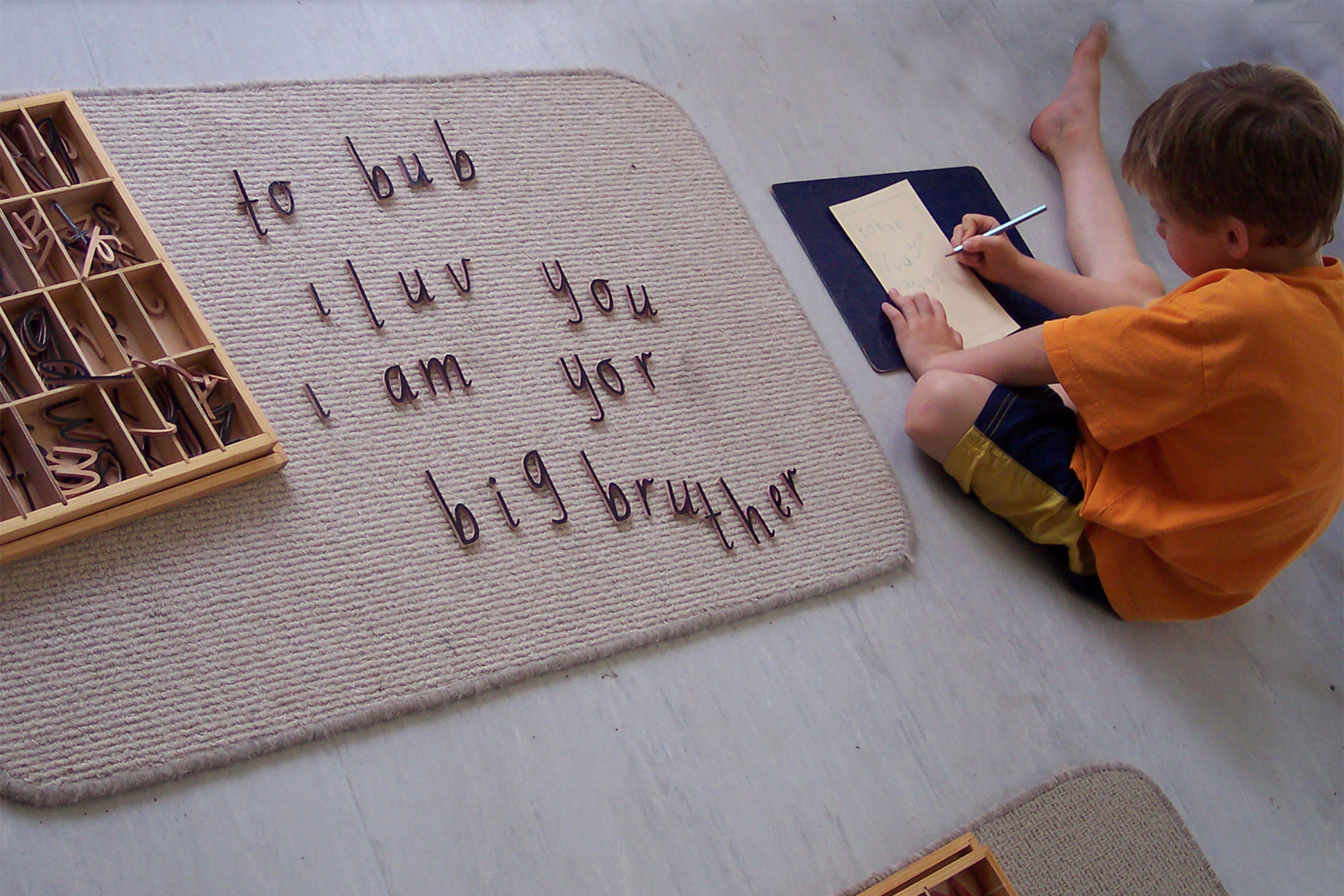The phonetic approach used in most Montessori schools is one in which the child explores the sounds of his/her own language, isolating sounds they hear. Then, the adult presents sandpaper letters which correspond to the child’s language sounds. Once children know about half of the sandpaper letters which are traced (preparing for writing), seen and the sound is heard, the child is introduced to the moveable alphabet. This is a box of moveable letters with which the child can “write” words in her own vocabulary – before having the manual skills to control a pencil. With enough work with the moveable alphabet, which gives the child experience in analyzing the sounds in words they know, they soon begin to fuse the sounds into words and read them back. In many languages which have non-phonetic words, once the child becomes facile in reading phonetic words, the particular challenges of the language are introduced, for example introducing the sounds made by diphthongs. This is a gradual language exploration during which time the child explores many aspects of their language or languages. The child comes to realize they can read certain words; this encourages them to tackle those language challenges to improve their reading abilities. In essence, we do not teach a child to read; we introduce children to the use of various materials which, with practice, enables them to read. In many instances this happens before the age of 6. The approach is changed for elementary aged children who are not yet reading.
